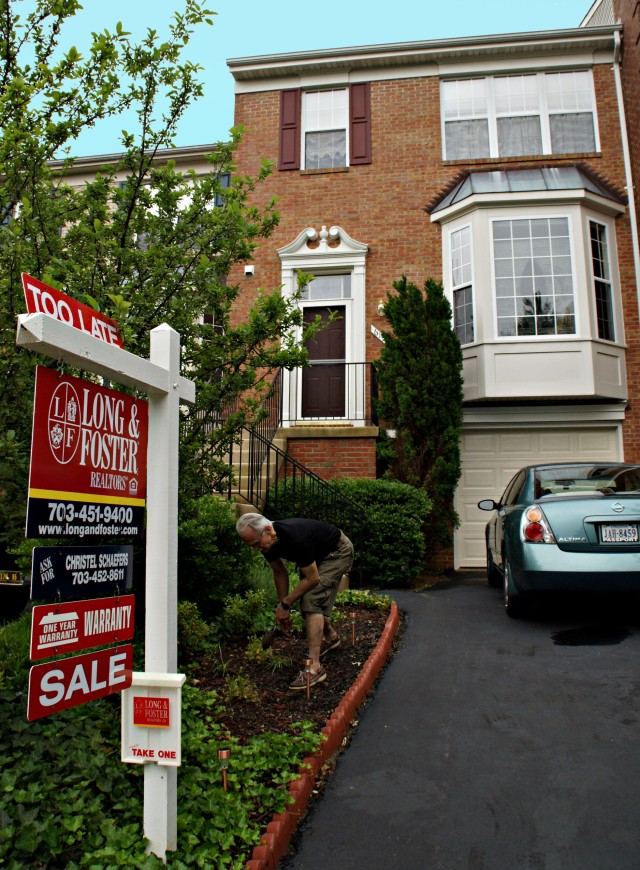ALEXANDRIA, Va. (Army News Service, June 29, 2009) -- While the Base Realignment and Closure decisions of 2005 are causing upheaval for some families, help is available through the Department of Defense National Relocation Program, the Homeowners Assistance Program, and soon, the Expanded HAP, thanks to the American Recovery and Reinvestment Act.
Besides standard Permanent Change of Station or PCS entitlements, the Department of Defense National Relocation Program provides relocation services, including a guaranteed home buyout process, to eligible DoD civilian employees so they can sell their homes at the prior-duty station and locate housing at the new duty station.
Its primary benefit, known as Guaranteed Home Sale, offers an alternative to the PCS reimbursement process. It also offers other valuable services such as the Home Marketing Incentive Payment, a financial-incentive-bonus payment that may be authorized for employees who successfully market their homes.
Since its inception in 1987, the relocation program has helped thousands of employees sell their homes through the Guaranteed Home Sale Program, rent their homes through the Property Management Program, and purchase or rent in a new town through Destination Services. The complete <a href="http://www.nab.usace.army.mil/dnrp/DNRP_rev12-08.pdf"target=_blank> DoD National Relocation Program Handbook</a>, revised December 2008, explains in detail the services available and the process required to obtain these services.
The traditional HAP program provides benefits for transferring Soldiers and civilian employees only when an economic impact study determines that the depreciation of home values is specifically linked to the closure of a nearby military installation, according to David Gage, chief of the National Relocation Program Office for the U.S. Army Corps of Engineers, Baltimore District, "In that case," Gage said, "HAP guarantees all or a portion of the difference between the price a property sells for and the estimated value of the property prior to the base closure announcement."
Expanded HAP will help even more.
On May 14, Vice President Joe Biden announced DoD's plan to add $555 million in funding from the American Recovery and Reinvestment Act to expand the HAP to help offset the effects of the country's struggling housing market.
"The recently passed economic stimulus program that expanded the HAP eligibility guidelines to provide some financial benefits for BRAC-affected servicemembers and civilian employees who sell their homes at prices less than their purchase price or less than the mortgage balance owed, without requiring any economic impact study," Gage said.
This temporary expansion, which includes the payment of closing costs to transferring servicemembers and civilian employees affected by BRAC 2005, was possible through the efforts of the Army Family Action Plan committee members who played a positive role in reviving the PCS issue.
Ralph Nordenhold and his wife, Sandra, DoD civilians who both work at Family and MWR Command in Alexandria, Va., recently sold their home through a private buyer after listing with DNRP.
"I had a realtor prior to working with DNRP," Nordenhold said. "After signing up with DNRP, I had a buyer within three days, at which point DNRP bought the home and began getting the appraisals, home inspections and title search completed."
The Nordenholds bought their home in Springfield, Va., in 1999 when, according to Ralph, the housing market was even worse than now.
"But up until this market, the value of our home rose, considerably, so I feel we got a good price. And thanks to the Home Marketing Incentive Program, because I sold my home before selling to DNRP (prior to 60 days after listing with DNRP), I will get a bonus," Nordenhold said.
Over the past few years, the Nordenholds improved their home by laying hardwood floors in the living and dining rooms, installing new stairs from the first to the second floor, and building a patio in the back with brick and slate.
"We've put a lot of work into this house which helped in marketing," Nordenhold said. Correcting any structural problems after listing with DNRP is a requirement.
After selling, more benefits may apply.
"When the implementing guidance (from DoD) is issued, employees who are eligible for HAP benefits who have already sold their homes can still file for HAP benefits after the fact," Gage said.
Employees who are or will be moving due to BRAC can use the DNRP for the home sale at current market value, and file for HAP benefits to provide any additional benefit (e.g., loss-on-sale or negative equity payments) for which they may be entitled.
The DNRP Web site, http://www.nab.usace.army.mil/dnrp.htm, includes info and a link to the HAP Web page.
The guidelines for eligibility for expanded HAP benefits are already established, and can be found at the HAP Web site: http://hap.usace.army.mil/.
However, the implementing guidance for the Expanded HAP won't reach the field until the end of July, perhaps August, according to Jeanne Hodge, public affairs officer with the U.S. Army Corps of Engineers, Savannah District.
"The Corps' role is execution of the program, once implementing guidance from the Office of the Secretary of Defense is received. The rules, policy, guidance are all being developed at the OSD level," Hodge said.
Present tax laws require that expanded HAP applicants will be taxed on all benefits above their home's current fair market value as part of their gross income. Applicants should consider this tax liability as they evaluate their best courses of action, officials advised.


Social Sharing